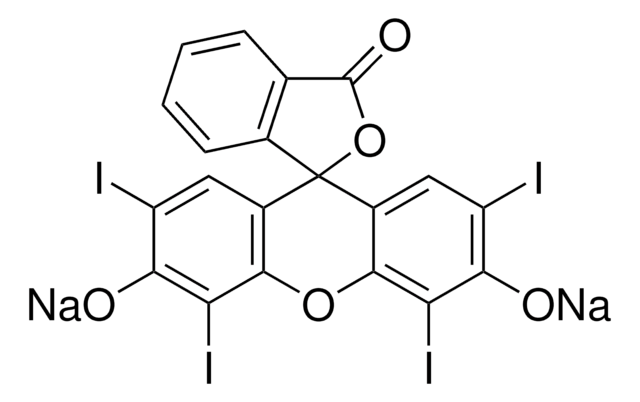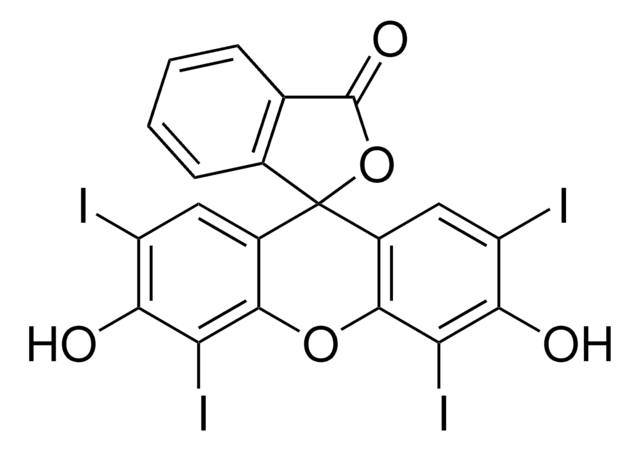45690
Erythrosin extra bluish
for microscopy (Bact., Hist.), adsorption and fluorescent indicator
Sinónimos:
2′,4′,5′,7′-Tetraiodofluorescein disodium salt, Acid Red 51, Iodoeosin
About This Item
Productos recomendados
grado
adsorption and fluorescent indicator
for microscopy (Bact., Hist.)
formulario
solid
técnicas
titration: suitable
cadena SMILES
[Na+].[Na+].[O-]c1c(I)cc2c(Oc3c(I)c([O-])c(I)cc3C24OC(=O)c5ccccc45)c1I
InChI
1S/C20H8I4O5.2Na/c21-11-5-9-17(13(23)15(11)25)28-18-10(6-12(22)16(26)14(18)24)20(9)8-4-2-1-3-7(8)19(27)29-20;;/h1-6,25-26H;;/q;2*+1/p-2
Clave InChI
RAGZEDHHTPQLAI-UHFFFAOYSA-L
¿Está buscando productos similares? Visita Guía de comparación de productos
Descripción general
Palabra de señalización
Warning
Frases de peligro
Consejos de prudencia
Clasificaciones de peligro
Acute Tox. 4 Oral - Aquatic Chronic 2
Código de clase de almacenamiento
11 - Combustible Solids
Clase de riesgo para el agua (WGK)
WGK 1
Punto de inflamabilidad (°F)
359.6 °F - closed cup
Punto de inflamabilidad (°C)
182 °C - closed cup
Equipo de protección personal
dust mask type N95 (US), Eyeshields, Gloves
Certificados de análisis (COA)
Busque Certificados de análisis (COA) introduciendo el número de lote del producto. Los números de lote se encuentran en la etiqueta del producto después de las palabras «Lot» o «Batch»
¿Ya tiene este producto?
Encuentre la documentación para los productos que ha comprado recientemente en la Biblioteca de documentos.
Los clientes también vieron
Nuestro equipo de científicos tiene experiencia en todas las áreas de investigación: Ciencias de la vida, Ciencia de los materiales, Síntesis química, Cromatografía, Analítica y muchas otras.
Póngase en contacto con el Servicio técnico







